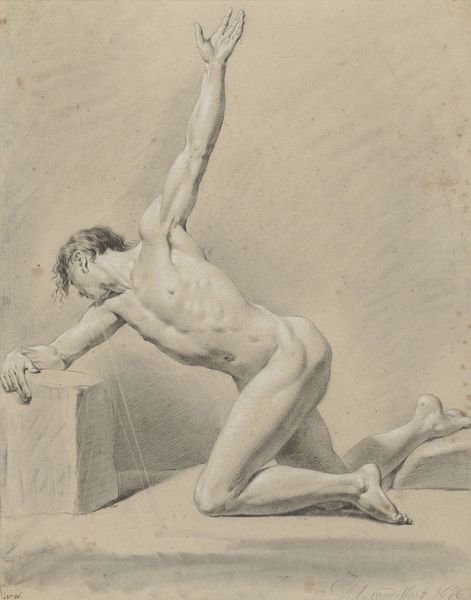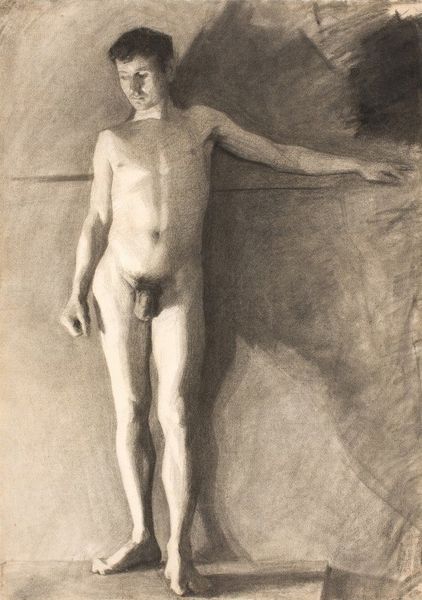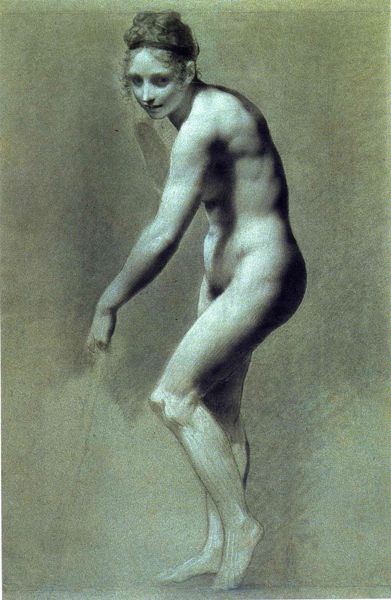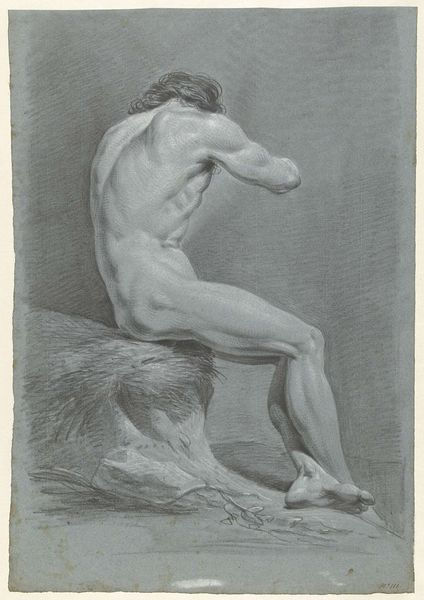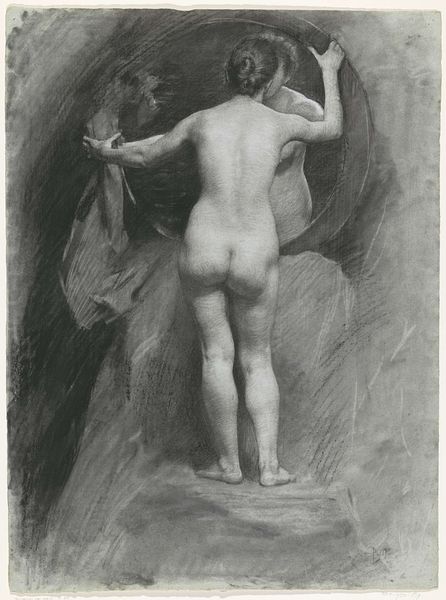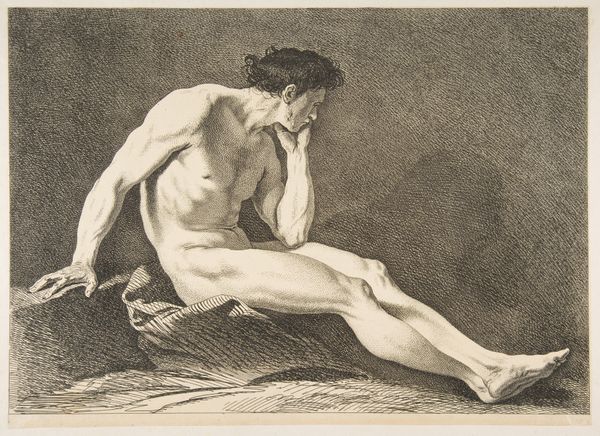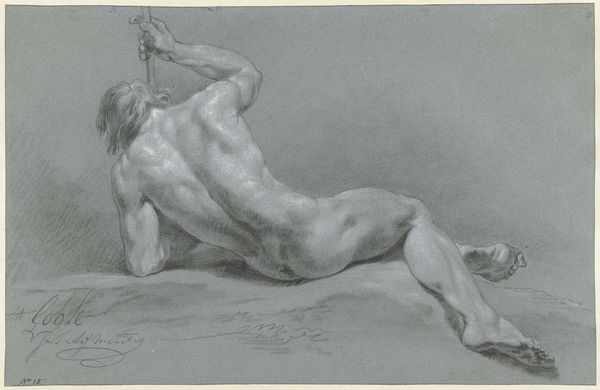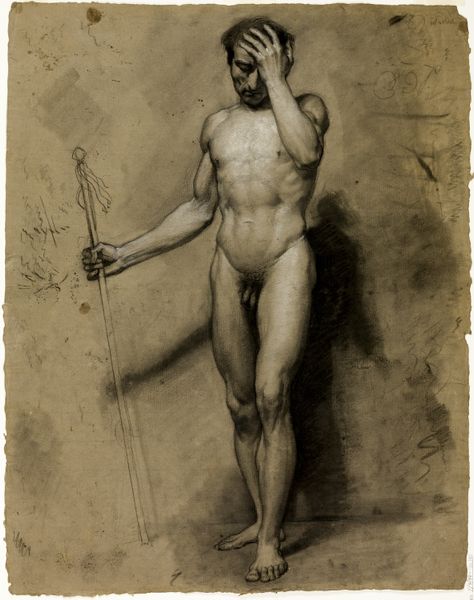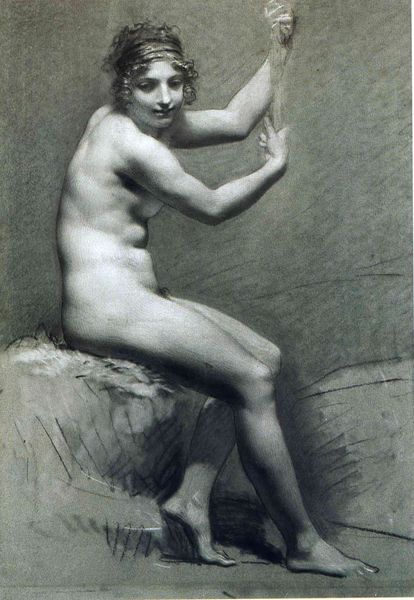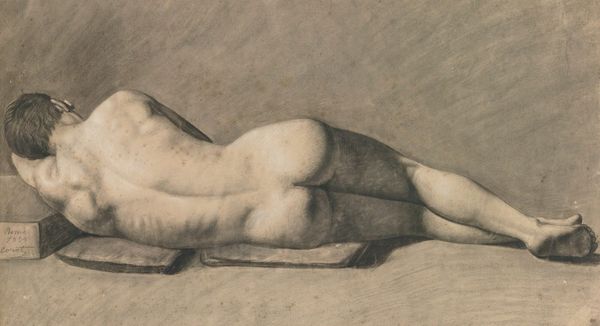
drawing, pencil, charcoal
#
portrait
#
drawing
#
charcoal drawing
#
pencil
#
charcoal
#
academic-art
#
charcoal
#
nude
Copyright: Public domain
Curator: What a powerful sense of torsion this study captures! Editor: Indeed. I'm struck by the contrast between the defined musculature and the almost spectral quality of the shading. Tell me more about what we are seeing. Curator: This is Anton Azbe's 'Study of a man,' from 1886, executed in charcoal and pencil. Note Azbe's technique, and how his methods were a blend of academic practice with the nascent influences of modernism creeping in. What aspects of labor and skill interest you most? Editor: I find myself most drawn to the use of light and shadow to create volume. The diagonal sweep from lower left to upper right pulls the eye upward, even though the figure’s gaze is directed elsewhere. I am especially drawn to how his expressive line articulates a kind of bodily syntax that is very engaging, even destabilizing. Curator: I agree. The positioning and rendering have so much to say about traditional art education. Consider the cost of art supplies and the amount of labor invested in these traditional male figure studies by working class models from that period. Editor: A fine point, though I think the work has to stand apart, despite all social considerations. One question worth asking may be: to what extent is he adhering to established artistic conventions of portraying the male form and to what extent is he consciously subverting them? Curator: Interesting. But I would suggest that it reflects the transition of Azbe’s studio away from simply teaching artistic anatomy, and toward embracing avant-garde aesthetics to suit a burgeoning new patron class. It signals a new era in art creation. Editor: It’s tempting to read too much into it. The drawing evokes timeless concerns around aspiration, perhaps. But what of his materials: The paper appears ordinary, perhaps inexpensive—quite a contrast to the mastery shown. It begs questions about production costs for teaching and students. Curator: Indeed, that might suggest something about the affordability of art education at the time and the specific audience Azbe catered to in his teaching studio. Seeing such fine artistry done in charcoal pencil lets us ask how that speaks to labor, economy, and a specific historical moment. Editor: All compelling elements, I agree. But perhaps, to focus solely on those details could allow us to overlook what the composition and draftsmanship tell us on their own. What did Anton Azbe accomplish, formally? Curator: Thank you for bringing our focus to those more intangible elements, allowing for a richer, layered interpretation. Editor: My pleasure; these formal nuances, and these details about artistry, they simply have to register!
Comments
No comments
Be the first to comment and join the conversation on the ultimate creative platform.
